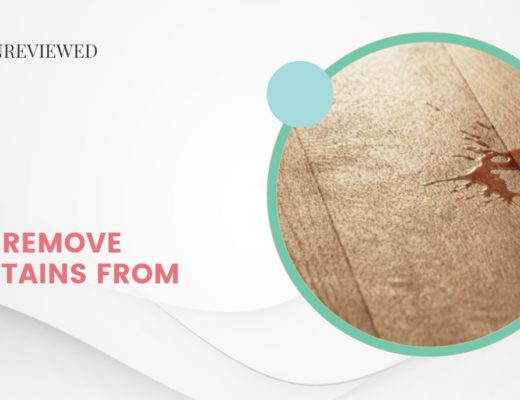There’s nothing cozier than the warmth brought by wood-burning stoves and fireplaces, especially when it’s freezing outside. However, using a fireplace comes with the responsibility of maintaining your chimney.
The more you use your wood stove or fireplace, the more creosote is likely to build up in your chimney and the more cleaning you’ll need. Creosote sweeping logs help reduce and loosen this buildup by just simply burning them.
In this article, we’ll explore what creosote sweeping logs do, their pros and cons, and how you can use them to clean your chimneys.
How do you get creosote buildup?

The primary cause of creosote buildup in chimneys is burning wood or other solid fuels.
The smoke and fumes the wood releases during combustion climb up the chimney and cool down when they hit the flue’s walls, causing them to harden and become creosote.
Burning wet wood increases the smoke and releases more unburned particles, so they’re more likely to produce creosote buildup.
Additionally, if your chimney airflow is restricted, the smoke will most likely stay in your chimney longer, increasing the possibility of creosote buildup.
What are the hazards associated with creosote buildup?

Creosote is highly flammable, so having a significant amount of buildup in your chimney poses fire hazards. They can also cause health problems when the smoke from the fireplace carries into the living space.
The buildup in your chimney wall can ignite and cause a chimney fire. Fires caused by creosote can be hard to control, so there’s a high possibility that they’ll spread to the rest of the house and even to nearby houses.
Creosote can also cause poor indoor air quality, which can be detrimental to your and your family’s health.
Carbon monoxide poisoning is among the possible health problems you may face when the smoke from the fireplace doesn’t get vented outside due to the buildup.
What do creosote sweeping logs do?

Creosote sweeping logs, which are also called chimney cleaning logs, help reduce and loosen up creosote buildup in chimneys.
When a creosote sweeping log is burned in a fireplace or stove, it releases special chemicals that climb up the chimney. These chemicals will then break down creosote in the chimney, making it less sticky and easier to remove.
Different brands and types of creosote sweeping logs may use different kinds of chemicals. Some logs may have things like copper oxychloride, ammonium chloride, or other chemicals.
What are the pros and cons of creosote sweeping logs?

Pros
- Easy to use
- Affordable cleaning solution
- Can be stored for a long time
- Helps reduce creosote buildup
Cons
- Not effective on gas and propane-powered fireplaces
- Doesn’t eliminate all creosote buildup
One of the biggest reasons creosote sweeping logs are extremely popular is the ease of use. You just need to burn the log in your fireplace and wait for the logs to finish burning to remove the debris.
They release chemicals that can help loosen and reduce creosote buildup during combustion, so they’re great cleaning aids for many houses.
They’re also relatively affordable, costing only $17 to $25 per pack. They can be stored for six years, so you don’t have to worry about stacking them up.
However, you have to remember that the logs can’t eliminate all of the buildup in your chimney.
They’re only effective when the creosote is still soft and can be easily brushed away, but once the creosote starts to harden and a tar-like substance starts appearing, they won’t be helpful anymore.
They’re also only effective in wood-burning fireplaces and wood stoves. They don’t provide any help in fireplaces powered by natural gas or propane.
How to Use a Creosote Sweeping Log

STEP 1: Perform a visual inspection on your chimney

Before using the creosote sweeping log or any chimney cleaning log, you have to first check if there are any obstructions that may hinder the process. There should be no huge debris and bird’s nests in the chimney, as they may cause chimney downdraft.
STEP 2: Open the damper

Make sure to open your wood stove or fireplace’s damper to ensure proper ventilation and airflow. Keeping it open also helps prevent downdraft and chimney fires.
STEP 3: Shut off all fans, heaters, and air conditioners

Turn off all the fans, heaters, and air conditioners in the house to ensure that the gas released by the logs won’t spread throughout the space.
STEP 4: Burn regular wood

Before lighting a creosote sweeping log, it’s recommended to burn regular wood first to warm up the chimney. When the inside of the chimney is hot, it helps the creosote sweeping log burn better and enhances its effectiveness.
STEP 5: Wait for the flame to die

Wait for the flame to die before putting the creosote sweeping log inside the wood stove or fireplace. Placing it while the wood is still burning can cause the fire to be too intense and reduce the log’s effectiveness.
Once there are only embers left inside, the wood stove or fireplace is ready for the sweeping creosote logs.
STEP 6: Pull the seams of the wrapper outward and place the log in the wood stove or fireplace

By pulling the seams of the wrapper outward, you’re creating better airspace between the wrapper and the log. The airspace can help the log to burn more efficiently.
Do not remove the log from the wrapper.
If you’re using a small wood stove or fireplace, use only one creosote sweeping log. If your wood stove or fireplace is on the larger end, use two.
If you’re using two logs, make sure to keep at least a 1-foot distance between them.
STEP 7: Light up the side of the wrapper

Once the creosote sweeping log is inside the wood stove or fireplace, light up both ends of the wrapper for a more efficient burning process.
STEP 8: Remove the debris

The creosote sweeping log will burn for about an hour and a half, but the smoking will continue for a few more minutes.
Once the smoking is done and the wood stove or fireplace is no longer that hot, you can start removing the debris that fell from the chimney and the ashes from the logs.
If you’re not in a rush, removing the debris and ashes after 2 to 3 days is highly suggested to ensure that they’ve completely cooled down.
How often should you use creosote sweeping logs?

One creosote sweeping log is enough for a season if you only use the fireplace or wood stove during weekends. However, if you use it once daily, use one creosote sweeping log at the start and one more in the middle of the season.
If the fireplace or woodstove is continuously lit, use one creosote sweeping log every 60 days for better results.
Do I still need to hire a chimney sweep if I use creosote sweeping log?

While sweeping creosote logs can help reduce and loosen creosote buildup, they’re not a substitute for professional chimney sweeping, so you will still need to hire professionals.
Professional chimney sweeps do more than just remove creosote buildup. They also help identify and remove airflow obstructions in your chimney, like nests, leaves, and other debris.
When you schedule professional chimney sweeps, they also inspect the overall structure of the chimney to see if it poses hazards. This is important, as chimneys can suffer from damages that we can’t normally see unless we go inside.
Moreover, creosote sweeping logs cannot eliminate all the creosote buildup in your chimney, especially the ones that have already hardened and contain tar. The loose creosote also still needs to be professionally removed.
How much does a professional chimney sweep cost?

A professional chimney sweep generally costs anywhere between $125 and $380. However, it can go for as low as $70 if the chimney is well-maintained and as high as $850 for a high-end cleaning service.
The price of a professional chimney sweep depends on the amount of cleaning needed and the amount of time between cleaning inspections. The less often the chimney is cleaned, the more work needs to be done, which can increase the cost of the service.
Removal of trapped animals like birds, bats, and squirrels inside the chimney also typically increases the cost of a professional chimney sweep.
Moreover, if there are structural problems in the chimney, the repair work is likely to cost more. Common repairs that you may encounter include the replacement of the chimney cap, chimney flue, and chimney flashing.
Another factor that affects the price of the service is the accessibility of the chimney.
The price of the service may increase if the roof is steep, if there are installed solar panels near the chimney, or if there are overhanging trees or any other obstacle that may make it hard for the chimney sweeper to reach the chimney.
You also need to take into consideration your location. Some states and countries charge more than others, so get a quote from different sweepers to get a better estimate.
How often should you hire a professional chimney sweep?

You should hire a professional chimney sweeper at least once a year, as recommended by the Chimney Safety Institute of America.
Even if you rarely use your fireplace, you shouldn’t miss the annual inspection and sweep to ensure that there’s no obstruction in your chimney and that it’s in the best possible condition.




